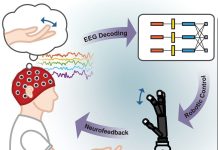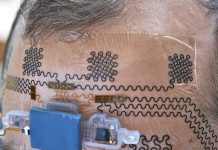
In a new study, researchers found structural differences in the brains of preschool-age children related to screen-based media use.
They found that children who have more screen time have lower structural integrity of white matter tracts in parts of the brain that support language and other emergent literacy skills.
These skills include imagery and executive function—the process involving mental control and self-regulation. These children also have lower scores on language and literacy measures.
The research was conducted by a team from the Cincinnati Children’s Hospital Medical Center.
The team assessed screen time in terms of the American Academy of Pediatrics (AAP) recommendations.
The AAP recommendations not only take into account time spent in front of screens but also access to screens, including portable devices; content; and who children are with and how they interact when they are looking at screens.
Among the AAP recommendations:
For children younger than 18 months, avoid the use of screen media other than video-chatting.
Parents of children 18 to 24 months of age who want to introduce digital media should choose high-quality programming, and watch it with their children to help them understand what they’re seeing.
For children ages 2 to 5 years, limit screen use to 1 hour per day of high-quality programs. Parents should co-view media with children to help them understand what they are seeing and apply it to the world around them.
Designate media-free times together, such as dinner or driving, as well as media-free locations at home, such as bedrooms.
The study involved 47 healthy children—27 girls and 20 boys—between 3 and 5 years old, and their parents.
The children completed standard cognitive tests followed by diffusion tensor MRI, which provides estimates of white matter integrity in the brain.
The researchers administered to parents a 15-item screening tool, the ScreenQ, which reflects AAP screen-based media recommendations.
The team found higher ScreenQ scores were strongly linked to lower expressive language, the ability to rapidly name objects (processing speed) and emergent literacy skills.
Higher ScreenQ scores were linked to lower brain white matter integrity, which affects organization and myelination—the process of forming a myelin sheath around a nerve to allow nerve impulses to move more quickly—in tracts involving language executive function and other literacy skills.
These findings highlight the need to understand the effects of screen time on the brain, particularly during stages of dynamic brain development in early childhood, so that providers, policymakers and parents can set healthy limits.
The lead author of the study is John Hutton, MD, director of the Reading & Literacy Discovery Center at Cincinnati Children’s.
The study is published in JAMA Pediatrics.
Copyright © 2019 Knowridge Science Report. All rights reserved.



